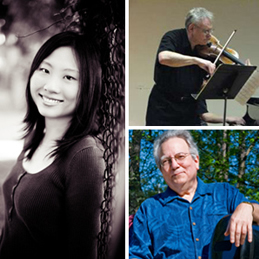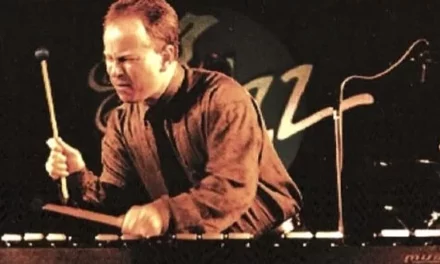Nicholas Kitchen was home at St. Stephen’s Episcopal Church where his father, Joe Kitchen, is still Principal Organist, and many of those who nurtured him were in the audience. With him were Kristopher Tong, Yeesun Kim and Mai Motobuchi, the other members of the Borromeo String Quartet, for a concert of Beethoven and Bach. In the sanctuary of the church, with its lively stone walls and stained glass, dampened just enough with a full audience, their sound was blended exquisitely. Their playing was flawless, and the scores they chose took the fortunate audience through a fantastic journey of musical experience not soon to be forgotten.
They opened with Beethoven’s String Quartet in F, Op. 135, one of the remarkable late quartets — in fact, the last one he completed. These last quartets are intimate, inner-oriented,and they represent Beethoven’s last thoughts on the sonata form. Some have even called them the first avant-garde music. This one is smaller in scale than most of the others, yet it is crammed with brilliance. With the phenomenal performance of the Borromeo, old Ludwig van totally got into my head. The opening Allegretto started with a singing, lyrical melody that was soon interrupted with dark images, only to return doggedly and fight it out with the dark — but not really angry — interruptions and to end happily. The Vivace launched into a syncopated and lively theme. The middle section became quite fierce at times, but here too the movement ends on an upbeat melody. Then the Lento a assai, cantante tranquillo I can only describe with a brief chain of consciousness: “This is beautiful, so sad, so beautiful, I want to cry, so sad, oh, this is painful, I want to cry, it is so beautiful, so sad, ecstatically sad, so beautiful, wondrously beautiful…” The last movement Beethoven headed with the words “Der schwer gefaßte Entschluß” (“The difficult decision”). I scribbled on my concert program as the introductory slow chords were played, “Doom.” The composer wrote under these chords, “Muss es sein?” (“Must it be?”) To which he responds, with the faster main theme of the movement, “Es muss sein!” (“It must be!”). The movement seemed to move into a frantic fight in the middle section, a struggle for creativity with intricate counterpoint and surging development. The viola breaks through with a strain of hope, and then the first violin sings incredibly and the cello echoes the theme, but doom returns. Yet the movement ends with a pizzicato coda and charming statement that seems to say, “I have done it. I am done. I am satisfied.” The F major Quartet was written in 1826. Only the last movement of the Quartet, Op. 130, written as a replacement for the Große Fugue, was written later. Beethoven died on March 26, 1827.
R. Benjamin Hutchens II, Director of Music at St. Stephen’s, noticed that some the phrases in the Bach Partita No. 2 in D minor paralleled some phrases in the second verse of the Cantata “Christ lag in Todes Banden,” S.4. Out of this came collaboration with the Kenan Choral Scholars (Meg Monroe, soprano, Rachel Wender, alto, Charles Clark, tenor, and Jay Dolan, bass) and Nicholas Kitchen. In his introductory remarks, Kitchen called attention to the fact that the Bach extended family included many church musicians of extraordinary skill and creativity. When they got together they would entertain themselves by trying to create as many different ways to devise counterpoint against a melody as they could. (What jam sessions those must have been!) Further, Kitchen said he didn’t know of anyone who could put so much music in that little box (the violin he held in his hand) as J.S. Bach. The performance of the Partita was a rare and beautiful treasure, with the Kenan Choral Scholars adding the illuminating delight of fragments from the Cantata.
The Borromeo Quartet closed the program with a selection from Beethoven’s middle period, the second of the three “Razumovsky” String Quartets, Op. 59. Here we have Beethoven in his most active period of creativity. The music is characterized by bold strokes, brash interplay, a hint of anger, and perhaps demand for attention. The development is leisurely and thoroughly worked out. The slow movement, quite different from the one we heard earlier, portrayed a different kind of beauty and sadness, more wistful with the first violin soaring marvelously. The final two movements are lively, with a gypsy-like melody and a delightful fugue in the Allegretto. The presto Finale seemed to say, “Now we’re having fun.” It was sunny, playful and a little rambunctious at times.
The Borromeo String Quartet brought Beethoven to life, accurately, intimately, and movingly, in an outstanding performance. It was a fantastic journey this afternoon.












